Your lawn probably has taken a beating this summer — family gatherings, fetch with the dog, and kids' games and toys have likely been working together with heat and drought to make your grass gasp for a breather. If your lawn is in need of a little TLC, you're in luck — fall is the best time to revitalize it so that next year's grass is the greenest and healthiest it can be.
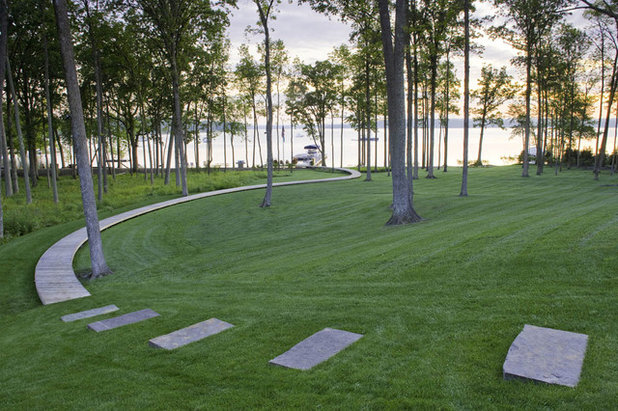
Wagner Hodgson
1. Know your grass. There are cool-season and warm-season grasses, and several varieties in each category.
- Cool-season grasses (Kentucky bluegrass, fescue, perennial ryegrass) are better suited for cooler climates, are most productive in spring and fall, sometimes take more irrigation and are generally mowed higher than warm-season grasses due to their erect growth habit.
- Warm-season grasses (Bermuda, St. Augustine, big bluestem) grow best in warmer climates, are typically more drought tolerant and are often mowed at lower heights.
Be sure to check with your local lawn experts for specific recommendations for turf grass in your area.
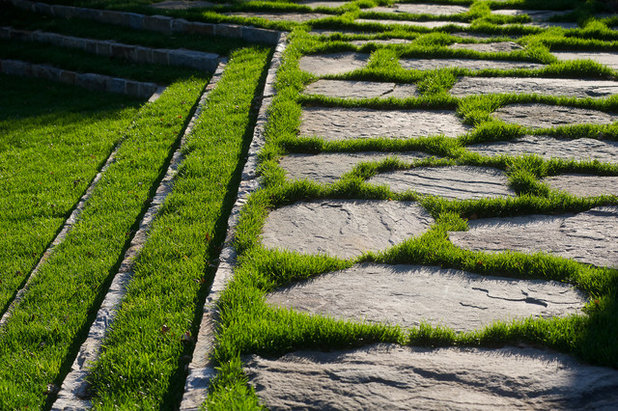
Fairfield House & Garden Co
2. Fertilize. In the fall, fertilize your lawn with an NPK (nitrogen, phosphorus, potassium) ratio of 3-1-2 or 4-1-2. The ratio doesn't need to be exact, but do try to get a product with similar amounts. Plan to use approximately 1 pound of fertilizer per 1,000 square feet of lawn and always follow the package directions. Applying too much fertilizer will not help your grass and, in fact, may damage it.
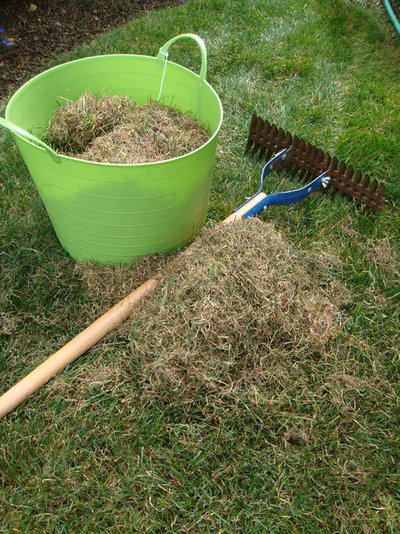
J. Peterson Garden Design
3. Dethatch. Thatch is the buildup of dead roots and stems that develop between the soil and the green grass blades.
If you have just a little buildup, you can use a hard rake or a dethatching rake to remove the dead grass, but if you have more than 1/2 inch you will need to core aerate in the fall or the spring.
Core aeration uses rentable equipment to remove plugs of soil, increasing the soil's ability to receive water, air and fertilizer. If your buildup is thicker than 2/3 inch, you will need to not only core aerate but add 1/8 to 1/4 inch of organic matter like compost or peat. Water in well.
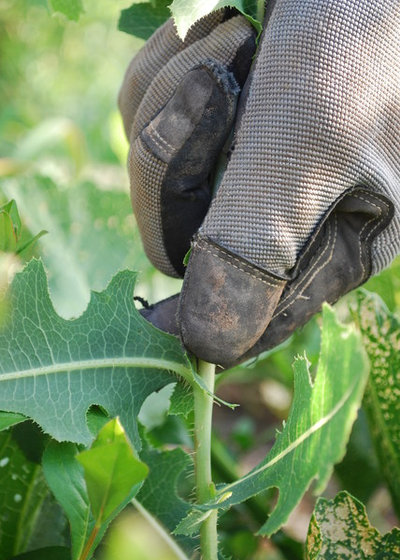
Jocelyn H. Chilvers
4. Control weeds. September and October are the best months to control perennial broadleaf weeds like clover and dandelions. These weeds are busy taking in sun and nutrients to get them through the winter months, so that means they are open to receiving weed killers as well.
If you have just a few weeds, pull them out by hand, but more numerous weeds may require additional tactics or chemicals — either organic or nonorganic. As with fertilizers, always follow the package directions when applying any chemical to your lawn to avoid damaging it and the surrounding plants. Don't worry about any bare spots left by weed removal; your healthy grass will take over those areas in no time.
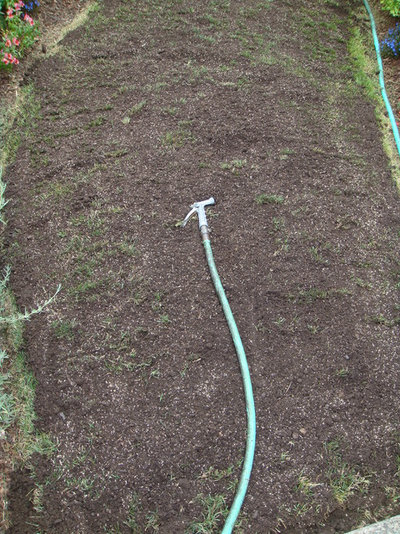
J. Peterson Garden Design
5. Sow grass seeds. If you have large bare areas left by weed removal or simply need to establish a new or extended part of your lawn, mid-August to mid-September is the best time to sow grass seeds. Always check with your county extension office or trusted local nursery about the best times to sow seeds in your area, however.
Before you sow, be sure you have prepared the soil correctly to get the best results. Till the soil at least 6 inches deep, add 1/2 to 1 inch or so of compost or peat, rake the soil smooth and sow the seeds. Water in well and keep the soil consistently moist until after the new growth emerges, or about 6 weeks.





